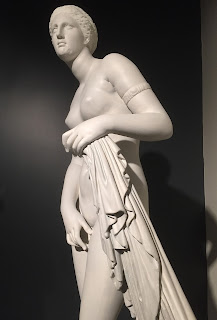Need a place to stay? Stinson Beach, California
October, 2017
It is a gorgeous day, and yes, I have left western New York for a week to visit with my son, who is celebrating his 35th birthday, and I also get to party with his wife, and my new little grandson, Oslo. My son, Nathaniel graduated from UC Berkeley and over the years I have walked the campus and I looked forward to seeing the new museum building designed by Diller, Scofidio and Renfro that houses the art and film archive.
Sather Gate, UC Berkeley
But it is late in the afternoon on a Sunday as I walk through the gate at UC Berkeley and the new museum will close soon, so I head over to see the Phoebe Hearst collection of ethnographic arts. Up the hill there is the iconic tower at the university and the echoes of all the student demonstrations still reverberate in my mind.
Tower at UC Berkeley
The first thing I see when I enter the Hearst Collection is a carved casket from the 26th Dynasty of ancient Egypt. The sarcophagus is covered with hieroglyphs and a wonderful falcon sits on the shoulder. This is the beginning of an immersion into world cultures, it is anthropology via art and artifacts.
Ancient Egypt
Inside, a large room is filled with art objects ( only a small portion of the entire collection ) and the show is divided into works whose maker is known, and objects that are "unsigned". Many of these pieces are from the distant past and would be hard to identify a particular artist as the maker. The famous Fayum portraits look like they could have been painted by one person, so there is a lot of detective work to find out who that artist was. Many of these paintings have survived the millennia but was that because of the encaustic medium that was used to create them?
Fayum Portraits, 1st Century, B.C., Egypt
The next thing I come across is a giant red rooster, also a funeral object - a colorful casket for a proper sendoff! This big bird was created by a carpenter in Ghana, and it is a contemporary work of art. This gets me thinking about the relationship that society has with art objects.
Red Rooster from Ghana, contemporary art
In Ghana, the big show goes on after you are dead! Maybe this is to celebrate your perceived place in society, and the dead one is remembered by this character ( a big red rooster! ). What kind of other art objects would they have in Ghana to represent them and do they have a function? I wonder about the function of the Tlingit storage boxes that I see in this show. What were they used for? I just don't know enough about the indigenous people to hazard a guess.
Tlingit Indian storage box, contemporary
Carved objects did have a function, like the arrowheads on exhibit, along with the baskets and ceramic pots. They have a function but they are also collected now as fine art objects for people's homes. The clay pots from the artist known as Nampeyo ( 1859-1942 ) stand out for their beauty in form and color.
Polychrome by Nampeyo
The ancient traditions of pottery in the Southwest are outstanding, and I was lucky that my family collected some of these beauties, and I have a few of them through inheritance. I think they have influenced my own art along the way, so I have a deep respect for these pieces on view at the Hearst collection. Nearby there were some playful Nazca ceramics including this wonderful flute player.
Nazca, Peru
Painted decorations for ceramic ware reach a high point with the Mediterranean pieces included in this show including the panther painter and the wine cup that is called a skyphos that you see here in the background.
Wine jars, and "skyphos"
Most likely, the classical Greek sculpture from this area of the world has had a more lasting effect because of the figure and what it has represented to our art. I think the Greeks had an ideal in mind that they brought to their art making practice, and that is represented here in this collection also.
Classical Greek marble carvings
From around the world, Phoebe Hearst bought Chinese robes to wear and in this collection was one that was so well preserved, it looked like it was embroidered only yesterday. Here again, I have been interested in these kinds of weavings myself, and have a few in my personal collection, although I wouldn't wear mine like I see in the photo of Phoebe Hearst. So many fine things in this show to see and contemplate. Thanks to UC Berkeley, and a beautiful day in California!
The Golden Dragons in Chinese textile art
in
The Phoebe A. Hearst Collection
UC Berkeley












